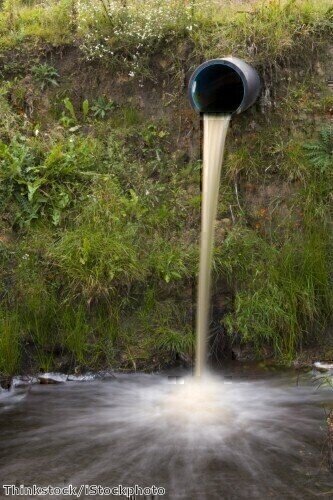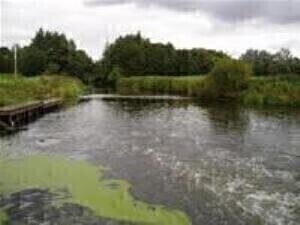Water/Wastewater
Are Livestock Farms Making Progress on River Pollution?
Dec 19 2022
When it comes to river pollution in the United Kingdom, sewage overflows are by far the most significant source, with over 750,000 incidents in the last two years that lasted for a combined duration of 5.7m hours (which, if you’re curious, is just over 650 years). In recognition of these violations, the Environment Agency (EA) has taken a number of providers to court, launching over 50 prosecutions in six years. By contrast, livestock farming managed around 300 incidents in 2022, of which 20 were major, but only six farms were prosecuted. The Environment Agency opted for letters of warning, instead – and it seems, perversely, like this might just do the trick.
For the most part, the source of the pollution coming from livestock farms is slurry, an age-old farming solution which mixes manure and water to produce an easily spreadable fertiliser. When rains force this slurry to leak into nearby rivers, poisonous hydrogen sulphide excreted by the bacteria in the manure is suspended in the water and can kill off all of the fish in a five-mile radius. For instance, in 2016, a Somerset farm was responsible for the deaths of 1,600 fish in the River Frome after a spillage incident. It is for this reason that the main pressure group operating in this are is the marine conversationist charity, WildFish. Recently,WildFish's CEO, Nick Measham, gave his analysis of the situation in a public statement:
“We need more robust sanctions. It is not just fining and arresting people. It is about having the inspection regime that points out farms that are not working within the rules and guidelines and working with them to correct these problems.”
Slurry can reduce oxygen levels in rivers, too. In those parts of the River Frome that were effected in 2016, oxygen concentrations had fallen from 90% to 2%. This promotes anaerobic organisms with the capacity to create environmental toxins, including ammonia and sulphides.
In recent years, the Environment Agency and British farmers have made significant progress on preventing pollution of this kind. The number of serious incidents has been roundly reduced, for instance, declining from 77 to 20 in the last four years. So far, the Environment Agency has opted for a strategy of collaboration rather than simple punishment, pushing the industry to invest in preventative infrastructure and processes.
In that regard, this year’s been no different, with 140 letters of warning issued by the EA and over 6,000 demands for improvements, just under half of which have already been completed. Thus, the seemingly low rate of prosecutions. For the Environment Agency, it is “a last resort when there is persistent non-compliance.” Before things reach this level, there is a prolonged period of intervention, including inspections (the EA has conducted no less than 3,000 since the beginning of 2022). The Department for Environment, Food and Rural Affairs (DEFRA) has, for its part, doubled the funding for its free advice services by which farmers can get professional help to improve their management of slurry, and set aside £13m in grants for farms looking to renovate their storage infrastructure. However, with real-terms budget cuts in the works for DEFRA, there’s a big question mark hanging over the future of such programmes.
Much of the praise should be reserved for the farmers themselves. As the National Farmers Union has made clear in a public statement, much of this progress was made by "voluntary action through industry-led initiatives to drive improvements that benefit the water environment.” One of the farmers making headlines with such voluntary action is Kate Hoare, a Cornwall-based producer who has just built one of Britain’s first slurry ‘lagoons’ that harvests the methane released from the mixture for use in some of the farm’s heavy machinery. With innovations of this kind, farmers are given clear incentives for compliance without taxpayer-funded interventions by the government because keeping slurry out of nearby rivers and in these lagoons will save farmers money – and not only on fuel. The disruptions to the supply chain effected by Russia’s invasion of Ukraine has forced the price of synthetic fertiliser into the stratosphere, making slurry the only option for most farmers. In such a context, being able to use slurry to produce fuel makes it doubly attractive.
In fact, it’s an idea that’s caught the attention of the United Kingdom’s largest conglomerate of dairy producers, Arla. The dairy giant not only rewards its farmers for using certain spreading techniques that prevent run-off and for keeping their slurry storage units in ship shape, but for using their reserves to make biogas.
There’s still a long way to go until the UK’s livestock farms are comprehensively green. But progress has been sustained and significant. Even though the figures for 2022 aren’t ideal, they represent a significant stride. Slowly but surely, we’re beginning to see the benefits of efforts made by industry and government. Let’s hope that this trajectory persists into 2023.
Digital Edition
IET 34.2 March 2024
April 2024
Gas Detection - Biogas batch fermentation system for laboratory use with automatic gas analysis in real time Water/Wastewater - Upcycling sensors for sustainable nature management - Prist...
View all digital editions
Events
Apr 30 2024 Melbourne, Australia
Apr 30 2024 Birmingham, UK
May 03 2024 Seoul, South Korea
May 05 2024 Seville, Spain
May 06 2024 Minneapolis, MN, USA



















